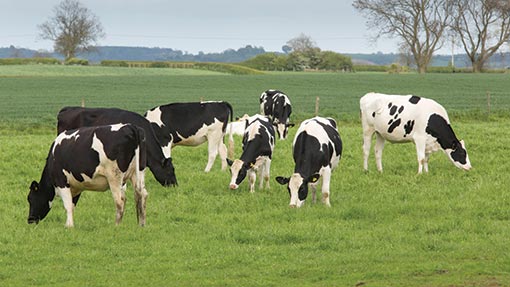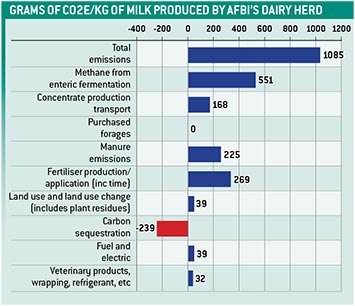Lowered gas emissions will improve dairy performance

Lowering greenhouse emissions from dairy farms will benefit the environment and improve production efficiency for a more sustainable future, according to one researcher.
The UK has a legally binding target to achieve an 80% reduction in greenhouse gas emissions by 2050 and researchers have been investigating the potential role of the dairy sector.
A recent study in Northern Ireland comparing the greenhouse gas emission of dairy cows housed all year round and those on a grass-based system has shown little difference in emission levels.
But at just over 1kg of emissions of carbon dioxide equivalent (CO2e)a litre of milk, head of dairy research at Agri-Food and Biosciences Institute (AFBI), Conrad Ferris, said dairy farmers can take steps to reduce these levels while also improving production efficiency.
Speaking at the AFBI open meeting in Hillsborough on Thursday (5 September), Dr Ferris said Northern Ireland’s emissions from agriculture were higher (28% compared with 10% in Great Britain) due to the importance and scale of the industry in the country.
By focusing on improving efficiency, emissions will reduce per unit of output, so although those wishing to expand will see a rise in emissions as a whole, it is the most common sense way to improve, said Dr Ferris.
When describing the significance of reducing emissions on profitability, Dr Ferris said hitting heifer calving targets is key.
“You don’t want animals standing on the farm producing greenhouse gases and not giving any product. There is huge efficiency to be gained with 24-month calving and low replacement rates.”
Improved forage quality, efficient concentrate and effective fertiliser and manure application can also lower emissions, he added.
“Emissions spread across just one or two years of milking are very inefficient (if the cow dies or is culled). If they can be spread across eight lactations, this is much better because the longer the cow lives it dilutes the emissions from the rearing period,” says Dr Ferris.
Graph one illustrates the amount of CO2e/kg milk produced by the AFBI Hillsborough dairy herd. Farmers can now also work out their own farm emissions using the online AFBI greenhouse gas emission calculator tool (available at www.dardni.gov.uk).

